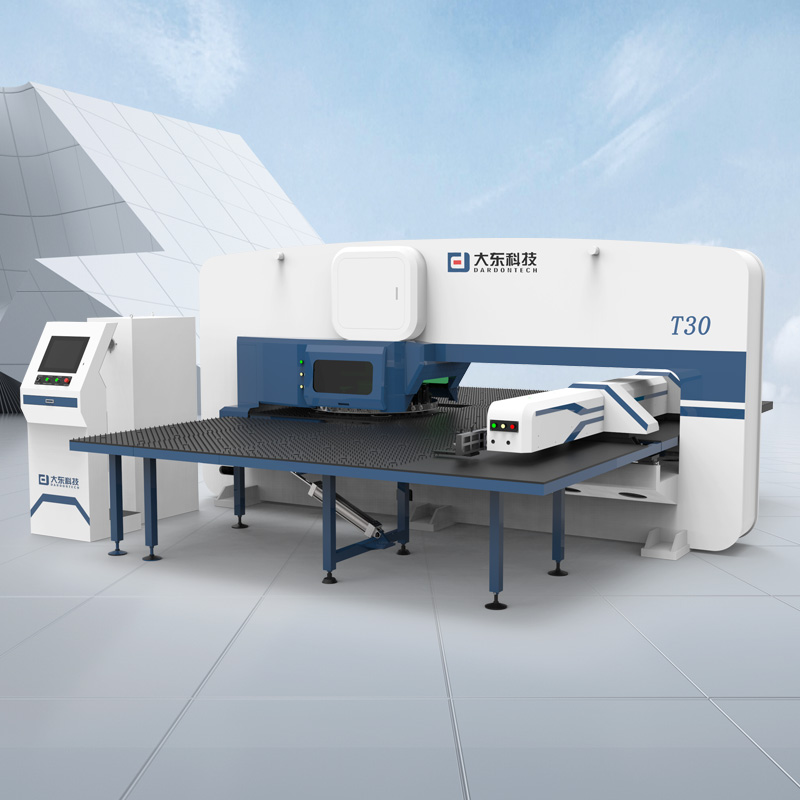Application of
CNC Turret Punch Press (2)
The typical processing technology of CNC turret punch mainly includes punching and forming.
Blanking process
The blanking process is also commonly referred to as the material separation process, which means that the processed material is sheared and separated along a closed or unclosed contour under the action of an external force. Blanking can either directly punch into finished parts, or prepare blanks for the next processes such as bending, deep drawing, and forming.
usually.
The blanking process is mainly divided into the following four modes:
1. Single punch. Complete punching in a single time, including punching of linear distribution, circular arc distribution, circular distribution, and grid hole punching.
2. Continuous punches in the same direction. Using the method of partially overlapping rectangular molds, long holes, trimming, etc. can be processed. When this punching mode is used, the superposition of the die during the punching process will cause the punching load to deviate from the center of the die (eccentric load), which will cause torsional deformation of the machine tool structure, and may damage the die in severe cases. . When punching a thick plate with a large load, the overlap of the mold should be reduced as much as possible to reduce the eccentric load.
3. Continuous rushing in multiple directions. This is a processing method that uses a small mold to process large holes, which can increase the flexibility of the machine tool and expand the processing range of the mold. With this punching mode, it is usually necessary to rotate the punch at different angles through the rotating station, and to cooperate with the positioning movement of the feeding mechanism on the XOY plane.
4. Nibble punching. This is a processing mode that uses a small circular die to continuously punch out arcs or splines with small steps, and is a common processing mode. Due to the use of small circles for fitting, the contour accuracy and section quality are usually not high, and the punching efficiency is low. When the punching size is large and the number is large, it is recommended to use a special punching die.
forming process
The forming process refers to the processing method in which the stress exceeds the yield point of the material and obtains a certain shape and size through plastic deformation under the action of external force, mainly including rolling, shallow drawing, flanging, bending, etc. Forming features and supporting molds.
1. Single-shot forming is a processing method of shallow drawing forming according to the shape of the mold. With this forming mode, the shape and size of the mold must correspond one-to-one with the features to be processed, which is exactly the same as the processing mode of an ordinary press. A completely "rigid" machining mode.
2. Continuous forming, forming methods larger than the size of the mold, such as large-sized shutters, rolling ribs, rolling steps and other processing methods.
The forming process of the plate is affected by the mechanical properties of the material, the thickness of the plate, the forming temperature, and the forming speed. Non-linear, its forming mechanism is extremely complex, and it is difficult to analyze through traditional mechanical formulas in actual production. In the computer virtual environment, the finite element method is used to simulate the material forming process, which can predict and evaluate the elastic springback, cracks and wrinkles in the forming process, which is conducive to the in-depth study of the forming mechanism. In industrial production, finite element analysis can guide mold design and optimize forming process parameters, which has immeasurable practical application value.

